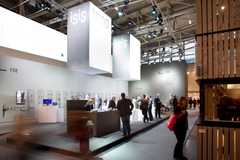German construction / Global
Building sights
BAU is the world’s largest fair for the construction and architecture industries while also being a dream getaway for home handymen. From grand designs to garden sheds, Monocle visits the design world’s most no-nonsense gathering.
On a bitingly cold midwinter’s morning a measured snowfall blankets Munich and leaves traffic at a dead stop. At the city’s fairgrounds visitors give scant attention to the elements, distracted by the buzz of activity emanating from inside the congress centre. There’s the whoosh-bang of nail guns driving tiny spikes into timber; in another hall, someone powers up a tile cutter. By lunchtime several booths are manned by blonde barmaids balancing trays of beer and taking orders while navigating through boisterous crowds of beefy men swilling lager. Welcome to bau, the world’s biggest get-together for people in the construction sector.
Held every two years, the event is a benchmark for the building industry, a business worth €5.3trn worldwide. The fair attracts everyone from architects and urban planners to property developers and carpenters, all eager to peruse the latest products and tools for making future homes and high-rises. Attendees move about with a sense of urgency: there are more than 2,000 businesses spread out in an exhibition space the size of 25 football fields.
The atmosphere at bau is not unlike a diy superstore at the weekend. In one hall, patrons run their hands over slanted roof mock-ups covered in tiles; in another, people inspect stands specialising in natural stone for household flooring. Products range from fancy intercom systems to a 130-year-old Bavarian company selling its line of silicone sealant for waterproofing bathtubs – its range of 76 colours includes “Whisper Blue” and “Chinchilla”. Some exhibitors get creative to lure passers-by, with one Swiss steel producer arranging its laser-welded beams in a bath of dry ice. Understandably, Germany has the biggest presence at bau with some 70 per cent of stands flying the host nation’s flag. The country’s construction industry employs over 1.6 million workers and each year spends €170bn on erecting commercial and residential projects. While the rest of Europe wades through the debt crisis, Germany is experiencing a modest housing boom and local property is seen as a safe investment.

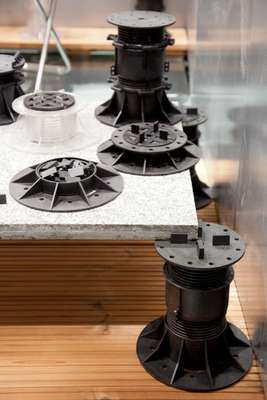
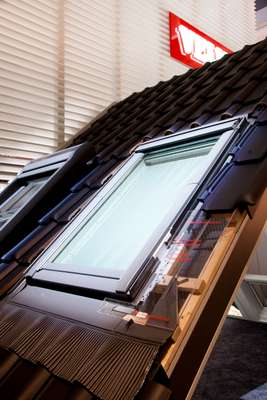
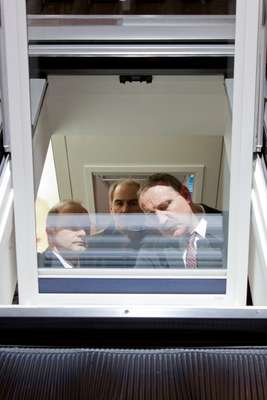


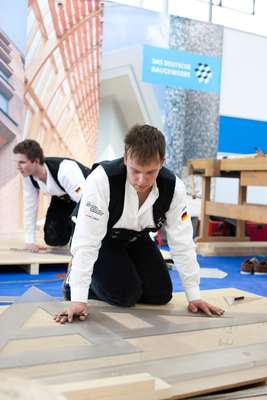
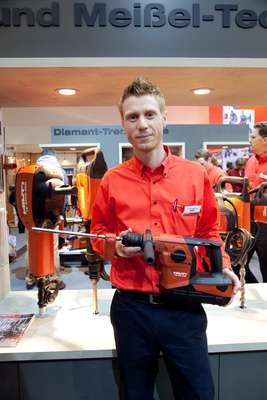

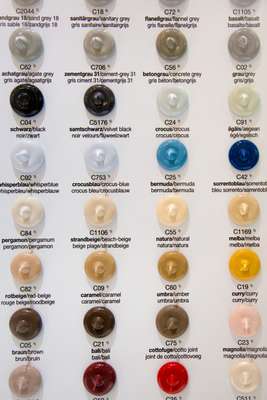
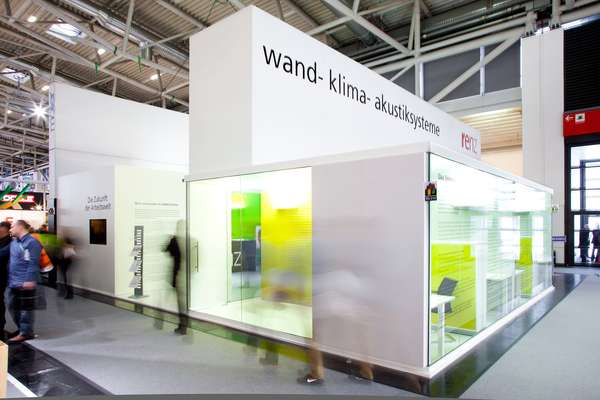
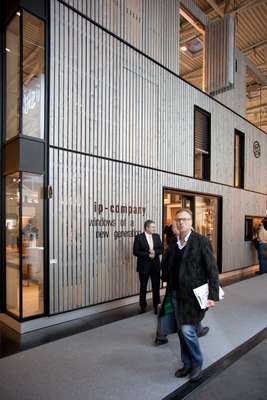
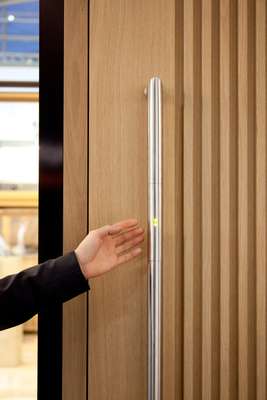

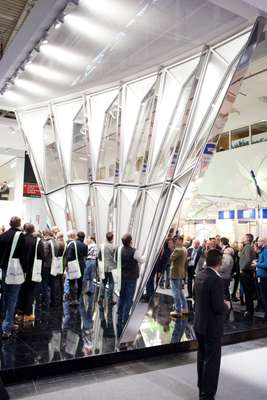
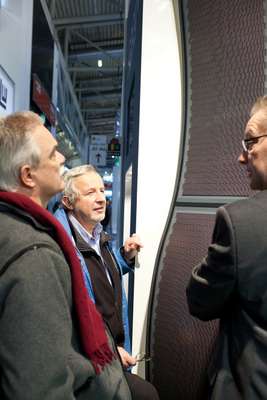
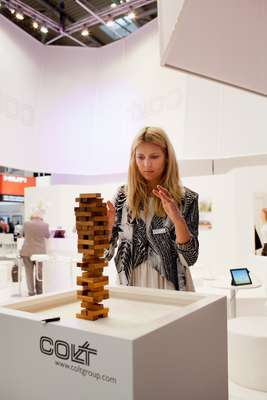
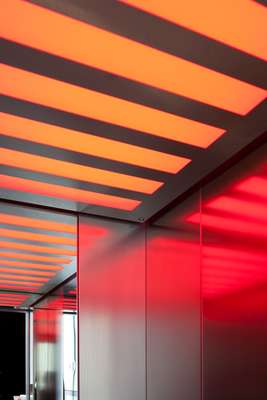
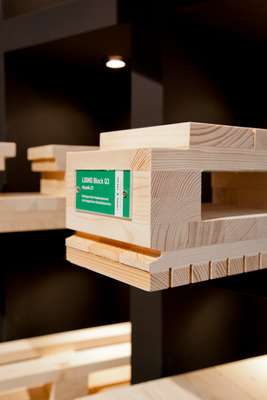
“The German building industry is strong,” says bau exhibition director Mirko Arend. “Many companies are middle-sized, owned and run directly by families. That’s a big advantage.” Still, with no businesses matching the scope or brand recognition of Bosch or bmw, the week-long biennial is a vital window to show off German know-how in construction – this year, one quarter of the 240,000 visitors arrived from abroad, with Russian and Chinese guests increasing the most.
Sustainability was a popular subject at bau, with talks featuring Daniel Libeskind and other prominent architects. “In Europe, around 40 per cent of the energy consumed goes into heating buildings,” adds Arend. “It’s an issue we have to deal with now.” Once dominant in producing flat solar panels for rooftops, German firms have been hit by cheap Chinese imports and have returned to the drawing board. One innovative idea that garnered an award from visiting architects at bau was a flexible photovoltaic panel from Germany’s Boehme Systems that is similar to a tyre tread and can be moulded to fit oddly shaped exteriors.
At glassmaker Schott, an employee pitched its new GlassX product, a translucent material for use on façades to substitute wood and cement walls. “It has the thermal properties of concrete; it stores energy from the sun’s rays but lets light pass. In summer, rooms won’t overheat like in a traditional glass building so you save on air conditioning. In winter, stored solar energy can be used for heating,” says Schott product manager Erik Richter.
Even lowly door fittings have gone cutting edge. Staff at third-generation family hardware business Häfele proposed to developers of hospitals and schools their anti-bacterial coating for door handles that efficiently kills off germs left by unwashed hands. Yet the busiest stalls over the week still centred on the bread-and-butter business of power tools. Construction workers congregated in front of demonstrations to see firsthand the slicing efficiency of new saws and firing capacity of nail guns.
In the crowd, there’s the odd journeyman carpenter fresh from an apprenticeship, with some dressed in the profession’s traditional garb (white shirt paired with black flared trousers, waistcoat and felt hat). Germany’s building community still places great emphasis on training for positions in the construction industry, with three-year work-study programmes available starting at age 15. Today, 40,000 apprentices learn skills to become bricklayers, glaziers and plasterers.
At the east entrance to the fair the country’s commitment to preparing the next generation is on show, with a team of apprentices on a mock work site. “There’s a satisfaction working with one’s hands,” says Rudolf Voos of the German Construction Confederation, whose members rely on said trainees. “It shows young people they can be successful. We have a great building tradition and are proud of it. Why wouldn’t we want the same for the future?”
Well-drilled
Set up by Martin Hilti during the Second World War in Schaan, Liechtenstein’s biggest city, the Hilti Group manufactures anchors, fasteners and power tools used by construction workers for basic tasks such as drilling large holes or affixing metal framing onto concrete. Still run by a family-controlled foundation, the firm employs 22,000 staff across eight plants, five of them in Europe, and in 2012 recorded €3.3bn in sales. Its fire-engine red line of drills, screwdrivers, sanders and hammers have earned its in-house designers accolades for their ease of use. Hilti’s diamond-tipped coring tools can blast through concrete, stone and asphalt and at BAU the firm showed off its TE30 drill with vacuum cleaner kit that simultaneously sucks up dust.
hilti.com
Clear winners
Founded in 1941 by Danish engineer Villum Kann Rasmussen, Velux is the leading manufacturer of skylights and roof windows for residential housing and has 10,000 workers worldwide. The brand’s models can be fitted with sunscreens and operated by remote control to open windows fitted into high ceilings. Made with a pinewood frame, its centre-pivot window rotates the pane 180 degrees to let homeowners clean outward-facing glass from inside. Velux’s booth at BAU showed its new range of modular skylights developed with Foster + Partners for use in office buildings requiring ventilation and daylight. Prefabricated frames are made of a glass fibre composite that insulates like wood but is as strong as steel.
velux.com
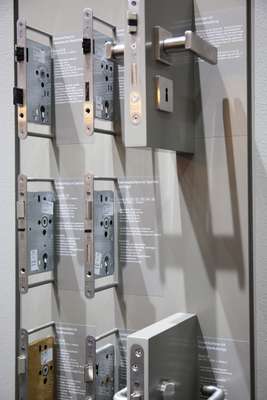
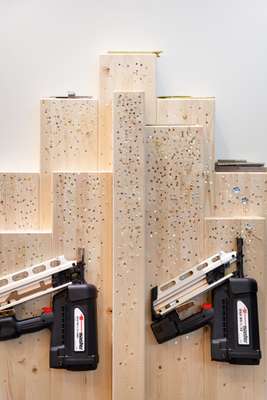
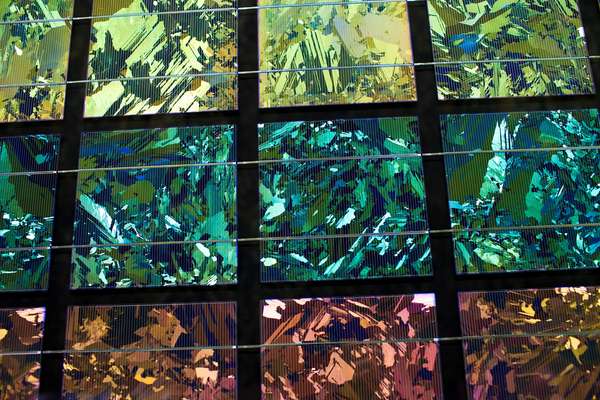
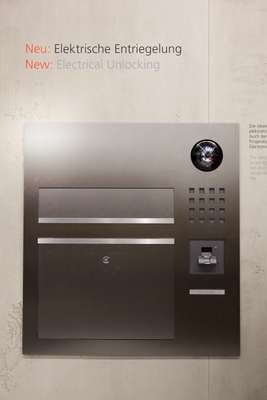
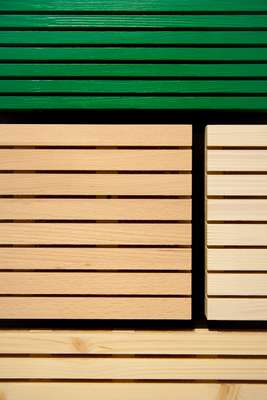
German-built successes
1.
FSB
Based in the Westphalia region, furniture fittings firm FSB makes door handles out of aluminium, stainless steel and bronze. Founded in 1881, today the manufacturer works with prominent designers and architects from Jasper Morrison to David Chipperfield. Its minimalist levers appear in Apple’s flagship Manhattan store and FSB designer Johannes Potente’s 1051 handle model was one of four chosen by New York’s MoMA for its museum collection.
fsb.de
2.
Würth Group
Still in the hands of the Würth family, the German heavyweight started modestly turning out screws at the end of the Second World War. Today it supplies parts and tools to the automotive and construction industries, the latter worth more than half a billion euros in sales annually. Carpenters, roofers, concrete contractors and bricklayers buy everything from brackets to pneumatic wrenches and the company even saves workers time by bringing hardware to them – its Bauloc mobile shops are based at large construction sites.
wuerth.com
3.
Schüco
Germany’s Schüco makes window and façade components for building exteriors. The brand has annual sales of €2.2bn for its modular cladding systems, which incorporate blinds and solar cells in composite insulating glass, to make new and old structures greener. The company introduced its 3D parametric design concept at BAU that allows architects the freedom to make complex geometric facades in CAD and then translate the shapes onto standardised façade panels to keep costs down.
schueco.com
4.
Siedle
Based in the Black Forest, the Siedle family started out casting bells for local clockmakers in the mid-18th century. Since the 1930s the brand has made its mark at the entrances to residences and offices with its über-sleek intercom systems. Panels are made from stainless steel, aluminium or brass with sharp fonts and a video lens. This not only lets occupants see who is arriving but takes a picture when the doorbell is rung to capture burglars on the hunt for empty homes and Siedle’s letterboxes are opened by a biometric fingerprint reader.
siedle.de
5.
Lignotrend
While most prefer the sight of well-laid parquet, those living downstairs don’t appreciate the thud made by heeled shoes on wood. At its BAU stand, German brand Lignotrend was showing its cross-laminated timber paneling made from thin strips of knotless silver fir and spruce panels that fit onto ceilings, walls and floors, backed with noise-absorbing wood fibreboard. “The benefit is that they are integrated into the building and not suspended like conventional acoustic panels,” says Tobias Amann, a master carpenter at Lignotrend.
lignotrend.com
Crowd pleasers
While Germany’s national football team rarely fails to deliver on the pitch, the country’s architects and companies have scored successes off the field too. Since hosting the 2006 World Cup, local firms have applied engineering know-how to win more contracts at sporting tournaments. In South Africa in 2010, Munich-based lighting manufacturer Osram, which lit eight of the 10 stadiums, took €1bn in orders and will supply the world’s largest LED stadium screen for the 2014 World Cup opening match in São Paulo. Having designed a trio of venues in South Africa, GMP Architekten will also be in Brazil next year. “For publicity, stadiums are great. No one sees a 300,000 sq m office park,” says GMP architect Martin Glass.

